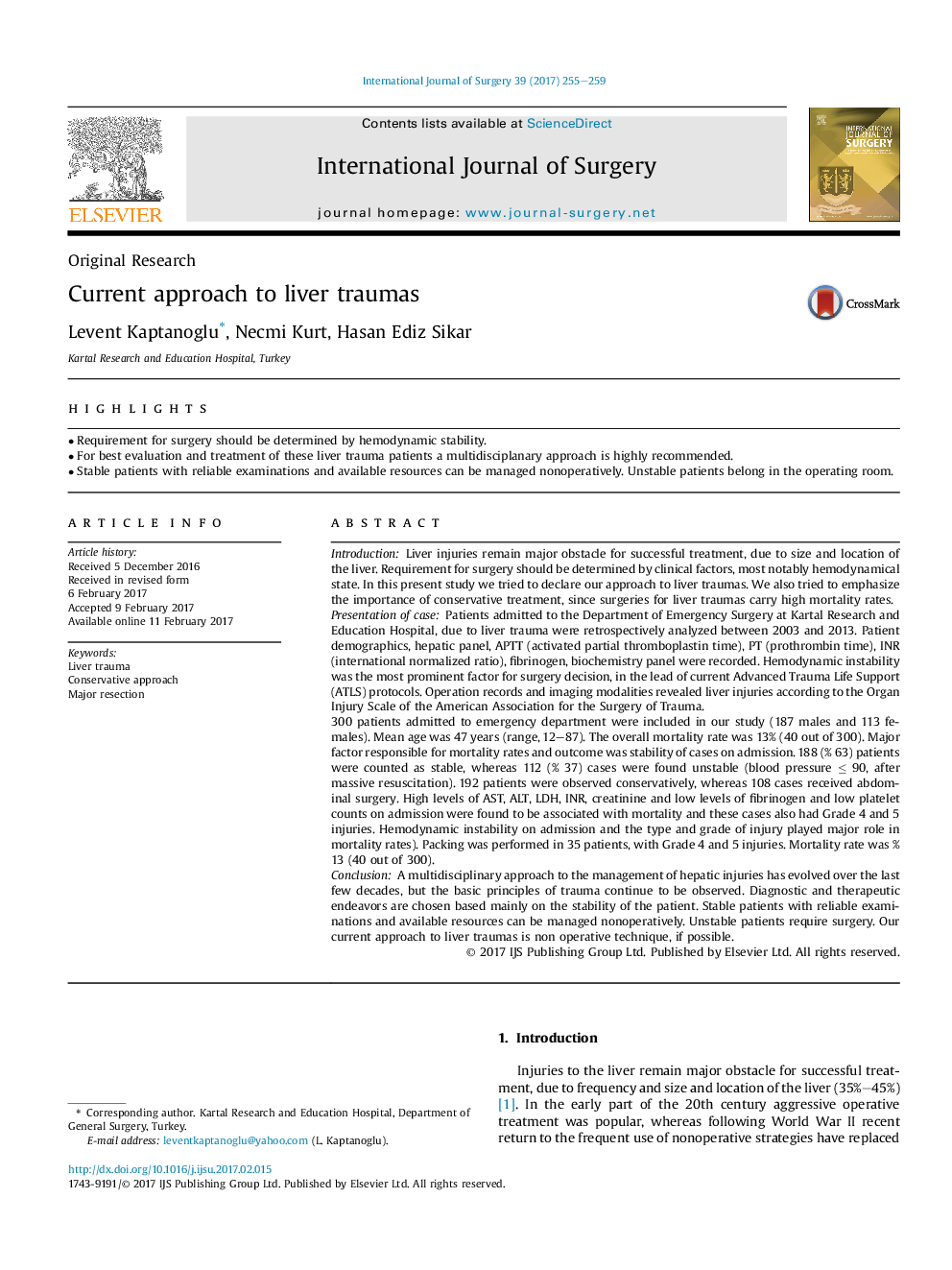| کد مقاله | کد نشریه | سال انتشار | مقاله انگلیسی | نسخه تمام متن |
|---|---|---|---|---|
| 5732117 | 1611940 | 2017 | 5 صفحه PDF | دانلود رایگان |

- Requirement for surgery should be determined by hemodynamic stability.
- For best evaluation and treatment of these liver trauma patients a multidisciplanary approach is highly recommended.
- Stable patients with reliable examinations and available resources can be managed nonoperatively. Unstable patients belong in the operating room.
IntroductionLiver injuries remain major obstacle for successful treatment, due to size and location of the liver. Requirement for surgery should be determined by clinical factors, most notably hemodynamical state. In this present study we tried to declare our approach to liver traumas. We also tried to emphasize the importance of conservative treatment, since surgeries for liver traumas carry high mortality rates.Presentation of casePatients admitted to the Department of Emergency Surgery at Kartal Research and Education Hospital, due to liver trauma were retrospectively analyzed between 2003 and 2013. Patient demographics, hepatic panel, APTT (activated partial thromboplastin time), PT (prothrombin time), INR (international normalized ratio), fibrinogen, biochemistry panel were recorded. Hemodynamic instability was the most prominent factor for surgery decision, in the lead of current Advanced Trauma Life Support (ATLS) protocols. Operation records and imaging modalities revealed liver injuries according to the Organ Injury Scale of the American Association for the Surgery of Trauma.300 patients admitted to emergency department were included in our study (187 males and 113 females). Mean age was 47 years (range, 12-87). The overall mortality rate was 13% (40 out of 300). Major factor responsible for mortality rates and outcome was stability of cases on admission. 188 (% 63) patients were counted as stable, whereas 112 (% 37) cases were found unstable (blood pressure â¤Â 90, after massive resuscitation). 192 patients were observed conservatively, whereas 108 cases received abdominal surgery. High levels of AST, ALT, LDH, INR, creatinine and low levels of fibrinogen and low platelet counts on admission were found to be associated with mortality and these cases also had Grade 4 and 5 injuries. Hemodynamic instability on admission and the type and grade of injury played major role in mortality rates). Packing was performed in 35 patients, with Grade 4 and 5 injuries. Mortality rate was %13 (40 out of 300).ConclusionA multidisciplinary approach to the management of hepatic injuries has evolved over the last few decades, but the basic principles of trauma continue to be observed. Diagnostic and therapeutic endeavors are chosen based mainly on the stability of the patient. Stable patients with reliable examinations and available resources can be managed nonoperatively. Unstable patients require surgery. Our current approach to liver traumas is non operative technique, if possible.
Journal: International Journal of Surgery - Volume 39, March 2017, Pages 255-259